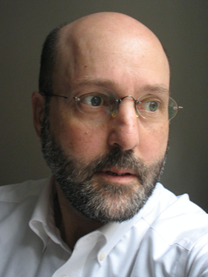Note: Captions are forthcoming.
The Engineering Laboratory at NIST, Gaithersburg, will be hosting its fourth annual symposium as a virtual only event on July 20-21, 2021 featuring the Disaster Resilience Grant Research Program recipients from 2019.
Recipients will present their research and findings from their awards from topics related to Disaster and Failure Studies, National Earthquake Hazards Reduction Program, Wind Impact Reduction, and Reduced Ignition of Building Components in Wildland-Urban Interface (WUI) Fires Project.
Keynote Speakers

Monica Sanders, Associate Professor, Sociology & Criminal Justice, University of Delaware
Title: Making the Case for Resilience: Why Law and Policy Must Be Informed By Science
Speaker bio: Monica Sanders is Senior Fellow at Tulane University’s Disaster Resilience Leadership Academy, where she teaches a course on climate justice. She also has faculty affiliations with the Georgetown University Law Center, where she has a course on disaster law, and the Emergency and Disaster Management Program. Previously, she created and taught a course on disaster law and policy at the Washington and Lee University School of Law. Her research interests include technology and vulnerable groups and legal constructs for just recovery.
Prior to transitioning to academe, Professor Sanders served as the Senior Legal Advisor for International Response and Programs at the American Red Cross, focusing on international disaster response and humanitarian assistance principles. Previously, she was a Senior Committee Counsel for both the House of Representatives and Senate Committees on Homeland Security.
She sits on the National Academies of Sciences, Engineering and Medicine’s Topics in Applied Research Committee and serves on a number of advisory boards, including the Institute for Building Technology and Safety. Professor Sanders is also a frequent collaborator with the Federal Emergency Management Agency (FEMA) on issues of equity and vulnerability with respect to disasters and climate change. Professor Sanders received her degrees from the University of Miami (B.S.), the Catholic University of America (JD), Harvard Law School Project on Negotiation (Cert.) and University College London (LL.M).

David Bonowitz
Title: Functional Recovery: What it Means to Design for Community Resilience
Abstract: The concept of Functional Recovery continues to develop as a new basis for earthquake-resistant design. Designing buildings and infrastructure for limited downtime – or an acceptably quick functional recovery – is not new, but it’s getting new attention through state and federal legislation, and showing new feasibility through research, technology, and actual project designs. Most intriguing is the recognition that designing for functional recovery is a necessary tool for achieving community-wide earthquake resilience. And if progress is to be measured at the community level, functional recovery will also be a matter of public policy. The lecture will look at the roles researchers, engineers, and others can play in shaping this thinking into design practice with four sets of questions: definitional, technical, policy, and implementation.
Speaker bio: David Bonowitz is a structural engineer practicing in San Francisco. He was honored as the 2020 Distinguished Lecturer by the Earthquake Engineering Research Institute. He is a Fellow Member of SEAONC and SEAOC, and past chair of the NCSEA Existing Buildings and Resilience committees. Bonowitz was an appointed member of the FEMA-NIST working group on Functional Recovery of the Built Environment and Critical Infrastructure. He is a co-author of “Functional Recovery: A Conceptual Framework,” an EERI white paper, and lead author of “Resilience-based Design and the NEHRP Provisions,” published in 2020 by FEMA and the National Institute of Building Sciences.
Related Reports
Piecing Together the Timeline of California’s Deadliest Wildfire
Agenda (Printable PDF) Updated 7/15
Note: Agenda times are EDT
|
ET |
Day 1: July 20, 2021 |
|||
|
10:00 |
Opening Remarks from the Director of the Engineering Laboratory |
Joannie Chin (NIST) |
||
|
10:15 |
Address by United States Congresswoman Zoe Lofgren, 19th District of California |
Zoe Lofgren (U.S. House of Reps.) |
||
|
10:30 |
Making The Case for Resilience: Why Law and Policy Must Be Informed By Science |
Monica Sanders (U. of Delaware) |
||
|
11:30 |
10 min break |
|||
|
11:40 |
NIST Statutory Programs Roundtable |
|||
|
|
Director, Disaster & Failure Studies, NIST |
Tanya Brown-Giammanco |
||
|
Director, National Windstorm Impact Reduction Program, NIST |
Scott Weaver |
|||
|
Chief, Fire Research Division, NIST |
Nelson Bryner |
|||
|
Director, National Earthquake Hazard Reduction Program, NIST |
Steve McCabe |
|||
|
12:30 |
30 min break |
|||
|
Concurrent Sessions |
Day 1 Session 1 |
|||
|
Track 1: WUI |
Speaker |
Track 2: Wind |
Speaker |
|
|
|
Moderator(s): |
|
Moderator(s): Marc Levitan |
|
|
1:00 |
Imaging pyrometry of smoldering wood embers |
Peter Sunderland (U. of Maryland) |
4-D Measurement and Modeling of Engineering-Relevant Windstorm Characteristics |
John Schroeder (Texas Tech. U.) |
|
1:30 |
Improving Disaster Resilience by Quantifying WUI Community Ember Exposure |
Dac Nguyen, Nigel Kaye (Clemson U.) |
Spatiotemporal Maps of Damaging Winds from Integrated Remote and In Situ Observations |
Michael Biggerstaff (U. of Oklahoma) |
|
2:00 |
Assessing long-range firebrand impingement rates in recent WUI wildfire events |
Janice Coen (U. Corp. for Atm. Res.) |
Wireless Sensor Network (WSN) System and LIDAR Experiments for the Characterization of Strong Wind Loads on Non-Structural Components and Near-Surface Wind Profiles |
Chelakara Subramanian, Jean-Paul Pinelli, Hadley Besing (Florida Inst. of Tech.) |
|
2:30 |
30 min break |
|||
|
Concurrent Sessions |
Day 1 Session 2 |
|||
|
Track 1: WUI/EQ |
Speaker |
Track 2: Wind/DFS |
Speaker |
|
|
ET |
|
Moderator(s): Eric Link, Siamak Sattar |
|
Moderator(s): Maria Dillard |
|
3:00 |
Development of a Fundamental Model for Ignition of Structural Wildland- Urban Interface (WUI) Fuels Subjected to Firebrand Attack |
Michael Gollner, Stanislav Stoliarov Jacques De Beer (U. of California, Berkeley, U. of Maryland) |
Innovative Measurement and Modeling of Dynamical Social and Health Effects of Windstorms |
Daan Liang Zhen Cong Guofeng Cao (U. of Alabama, U. Texas Arlington, U. of Colorado) |
|
3:30 |
Firebrand Material Ignition Conditions & Assessment Method Development |
Brian Lattimer, Jonathan Hodges (Virginia Tech. Jensen Hughes) |
Measurement of Near-Surface Pressure, Wind and Wind-Induced Load Characteristics Using Novel Sensors in Thunderstorm, Tornado, and Tornado- Like Environments |
Franklin T. Lombardo (U. of Illinois) |
|
4:00 |
Seismic Assessment, Retrofit Strategies and Policy Implications for Vulnerable Existing Steel Buildings |
Francisco Galvis Gregory Deierlein (Stanford U.) |
Coastal Inundation Events in Developed Regions |
Andrew Kennedy (U. of Notre Dame) |
|
4:30 |
Resilience of Steel Moment Frame Systems with Deep, Slender Column Sections |
Jason McCormick (U. of Michigan) |
Leveraging Uncertain Disaster Field Data for Community-Scale Assessment of Connected Buildings and Lifelines |
Iris Tien (Georgia Tech. Res. Corp.) |
|
5:00 |
End Day 1 |
|||
|
ET |
Day 2: July 21, 2021 |
|
|
11:00 |
Functional Recovery: What it Means to Design for Community Resilience |
David Bonowitz |
|
12:00 |
30 min break |
|
|
|
Day 2 Session 1 |
|
|
Track 3: Earthquake |
Speaker |
|
|
|
Moderator(s): Sissy Nikolaou |
|
|
12:30 |
Liquefaction-Targeted Ground Motion Parameters |
Steven Kramer, Andrew Makdisi (U. of Washington) |
|
1:00 |
Decision-Oriented Column Simulation Capabilities for Enhancing Disaster Resilience of Reinforced Concrete Buildings |
Wassim Ghannoum, Adolfo Matamoros, Sergio Brena (U. of Texas, San Antonio, UMass Amherst) |
|
1:30 |
Aging Effects in the Seismic Performance of RC Structures |
Petros Sideris, Mija Hubler (Texas A&M, U. of Colorado) |
|
2:00 |
1 hr break |
|
Day 1: July 20, 2021
|
|
Link to Join Session: TBA |
|
|
10:00am ET |
Opening Remarks from the Director of the Engineering Laboratory |
Joannie Chin (NIST) |
|
10:15am ET |
Address by United States Congresswoman Zoe Lofgren, 19th District of California |
Zoe Lofgren (U.S. House of Reps.) |
|
10:20am |
Making the Case for Resilience: Why Law and Policy Must Be Informed By Science |
Monica Sanders (U. of Delaware) |
|
11:20am |
Break |
|
|
11:30am |
NIST Statutory Programs Roundtable *Moderated by Maria Dillard, Associate Lead Investigator, Hurricane Maria Program, NIST
|
|
|
12:30am |
Break |
|
|
Day 1 Session 1 |
||
|
|
Track 1: WUI |
Track 2: Wind |
|
|
|
|
|
1:00pm ET |
Imaging Pyrometry of Smoldering Wood Embers, Peter Sunderland (U. of Maryland) |
4-D Measurement and Modeling of Engineering-Relevant Windstorm Characteristics, John Schroeder (Texas Tech. U.) |
|
1:30pm |
Improving Disaster Resilience by Quantifying WUI Community Ember Exposure, Dac Nguyen, Nigel Kaye (Clemson U.) |
Spatiotemporal Maps of Damaging Winds from Integrated Remote and In Situ Observations, Michael Biggerstaff (U. of Oklahoma) |
|
2:00pm |
Assessing long-range firebrand impingement rates in recent WUI wildfire events, Janice Coen (U. Corp. for Atm. Res.) |
Wireless Sensor Network (WSN) System and LIDAR Experiments for the Characterization of Strong Wind Loads on Non-Structural Components and Near-Surface Wind Profiles, Chelakara Subramanian, Jean-Paul Pinelli, Hadley Besing (Florida Inst. Of Tech)
|
|
2:30pm |
Break |
|
|
Day 1 Session 2 |
||
|
|
|
|
|
3:00pm |
Development of a Fundamental Model for Ignition of Structural Wildland-Urban Interface (WUI) Fuels Subjected to Firebrand Attack, Michael Gollner, Stanislav Stoliarov, Jacques De Beer (U. of California, Berkeley, U. of Maryland)
|
Innovative Measurement and Modeling of Dynamical Social and Health Effects of Windstorms, Daan Liang, Zhen Cong, Guofeng Cao (U. of Alabama) |
|
3:30pm |
Firebrand Material Ignition Conditions & Assessment Method Development, Brian Lattimer, Jonathan Hodges (Virginia Tech. Jensen Hughes) |
Measurement of Near-Surface Pressure, Wind and Wind-Induced Load Characteristics Using Novel Sensors in Thunderstorm, Tornado, and Tornado-Like Environments, Franklin T. Lombardo (U. of Illinois) |
|
4:00pm |
Seismic Assessment, Retrofit Strategies, and Policy Implications for Vulnerable Existing Steel Buildings, Francisco Galvis, Gregory Deierlein (Stanford U.) |
Coastal Inundation Events in Developed Regions, Andrew Kennedy (U. of Notre Dame) |
|
4:30pm |
Resilience of Steel Moment Frame Systems with Deep, Slender Column Sections, Jason McCormick (U. of Michigan) |
Leveraging Uncertain Disaster Field Data for Community-Scale Assessment of Connected Buildings and Lifelines, Iris Tien (Georgia Tech. Res. Corp.) |
|
5:00pm |
End of Day 1 |
|
Day 2: July 21, 2021
|
11:00am |
Functional Recovery: What it Means to Design for Community Resilience |
David Bonowitz |
|
12:00pm |
Break |
|
|
|
Day 2 Session 1 |
|
|
|
Track 3: Earthquake |
|
|
|
|
|
|
12:30pm |
Liquefaction-Targeted Ground Motion Parameters, Steven Kramer, Andrew Makdisi (U. of Washington)
|
|
|
1:00pm |
Decision-Oriented Column Simulation Capabilities for Enhancing Disaster Resilience of Reinforced Concrete Buildings, Wassim Ghanoum, Adolfo Matamoros, Sergio Brena (U. of Texas, San Antonio, UMass Amherst) |
|
|
1:30pm |
Aging Effects in the Seismic Performance of RC Structures, Petros Sideris, Mija Hubler (Texas A&M, U. of Colorado) |
|
|
2:00pm |
Break |
|
|
|
Day 2 Session 2 |
|
|
|
|
3:00pm |
Seismic Rehabilitation of Existing Unreinforced Masonry Buildings, Andreas Stavridis (Res. Found. For SUNY) |
|
3:30pm |
Seismic Assessment and Retrofit Methods for Existing Non-Ductile Reinforced Concrete Wall Structures, Juan Murcia-Delso, Ioannis Koutomanos (U. of Texas at Austin, Virginia Tech) |
|
4:00pm |
Designing for and Assessing Functional Recovery in Seismic Retrofit of Existing Concrete Buildings: A Framework, Abbie B. Liel, Maria Koliou (U. of Colorado, Texas A&M) |
|
4:30pm |
Progress and Future Plans for the Disaster Resilience Grants Program, Jaqueline (Jack) Meszaros, NSF |
|
5:00pm |
End of Day 2 |

